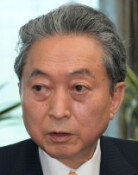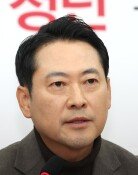Parties in Fierce Battles Outside of Strongholds
Parties in Fierce Battles Outside of Strongholds
Posted April. 03, 2008 06:25,
In the 17th general elections, the Grand National Party had a mere 0.4 percent of votes in the Jeolla provinces.
Although the party has candidates in all 31 districts of the Jeolla region, as of now, not one of their candidates is likely to be elected there. Though recent polls show one of their candidates in Gwangyang, South Jeolla Province, ranking second, support still lags far behind the leading candidate.
The conservative ruling party got one candidate elected in Gunsan, North Jeolla Province in the 15th general elections in 1996 when the party was then called the New Korea Party. Since then, however, the party has failed to elect a single candidate in the Jeolla provinces.
The focus of much attention is whether the GNP will be able to record double-digit approval ratings in the region. In the previous 17th general elections, the partys support was 0.4 percent. Most recently, the partys then-presidential candidate, President Lee Myung-bak, received 8.9 percent of the regions votes.
The United Democratic Party is in a neck-and-neck race in two constituencies in the Yeongnam region (Gyeongsang provinces).
If the UDP can elect two candidates in the southeastern part of Korea, this will be a big victory for a party that has recently seen defeats. The partys presidential candidate lost in last years presidential election, and the party is expected to come short of its target of 100 seats in the upcoming general elections.
Recent surveys show two UDP candidates in a close contest in Saha-eul, Busan and Gimhae-eul, South Gyeongsang Province, former President Roh Moo-hyuns hometown. Meanwhile, three to four are running in second place in recent polls, though none of them are within range of winning.
The UDPs predecessor, the Uri Party, won four seats in the region in the 17th general elections, following a backlash to the attempted impeachment of President Roh.
The Liberty Forward Party wants to change its image as a regional party.
The LFP is doing its utmost to get a seat outside the Chungcheong provinces, as it is criticized for being a one-region party. Although the leaders of the party, including party head, Lee Hoi-chang, are looking for opportunities elsewhere, the best the party is doing now is in Daegu and Gangwon, where two of their candidates are in second place.
The Pro-Park Alliance is fighting desperately outside Yeongnam where Park Geun-hyes influence is not as strong. According to recent polls, its candidates are in close contests in Yeoju-Icheon and Ansan Sangnok-eul, Gyeonggi Province. The chairman of the party, Seo Cheong-won, listed as the No. 2 proportional representation candidate of the party, said, Our party will make Park Geun-hye the countrys next president in five years.
Will many independent candidates be elected?
In the 14th general elections, 21 independents were elected. Since then, their numbers have declined to 16 seats in the 15th, five in the 16th and two in the 17th. Experts say, as the countrys party system stabilizes, the number of independents usually declines under a single-seat electoral system.
However, recent public opinion polls show independents leading in roughly 17 constituencies, while 10 candidates are within the margin of error behind leading candidates. Many of them who failed to receive nominations from their former parties are running in the Gyeongsang and Jeolla provinces.
It is too early to say whether elected independents will help overcome regionalism in Korea, as they are likely to return to their former party, once elected.
jkmas@donga.com







